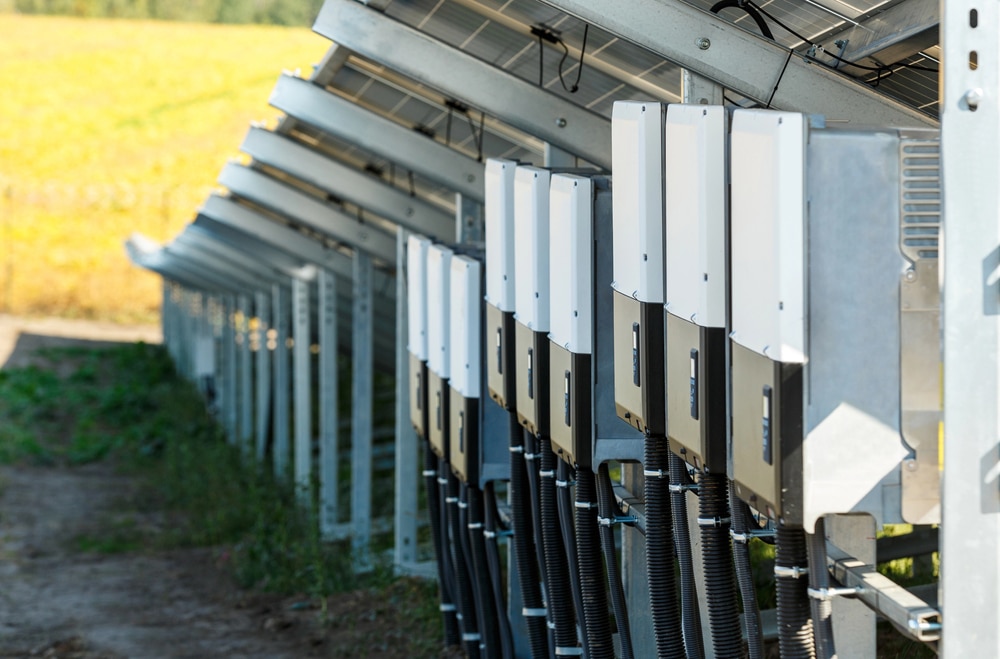
Article At A Glance
- What Solar Inverters Do: Solar inverters are the “brain” of solar systems. They convert DC electricity from solar panels into AC power for home and business use while providing monitoring, safety, and efficiency optimization.
- Types of Solar Inverters: Key types include grid-tied inverters for net metering, off-grid inverters for remote locations, hybrid inverters with battery backup, and microinverters for individual panel performance.
- Advanced Features: Modern inverters include Maximum Power Point Tracking (MPPT) technology for optimizing energy output, battery management systems, and capabilities for seamless transitions during grid outages.
- Verde Solutions Expertise: Verde Solutions offers expert guidance and installation of solar inverters, ensuring you choose the best option for maximum energy efficiency and system reliability.
You want to switch to renewable power, but the technical aspects of solar energy systems seem overwhelming. Knowing how solar inverters work is necessary for ensuring you have the best solar panel system for your needs
Below, Verde Solutions will explain solar inverters and help you understand how these essential components transform sustainable energy into usable electricity for your home or business.
Additional Read: Key Benefits Of Solar Panels For Your Business
What Is a Solar Inverter?
So, what is a solar inverter? This device is the brain of your solar panel system, managing the conversion of DC to AC electricity.
When sunlight hits solar panels, they generate direct current (DC) electricity. However, your home appliances and the electrical grid require alternating current (AC). Solar inverters convert DC to AC power, ensuring maximum energy output from these systems.
Beyond power conversion, these crucial devices provide essential monitoring and safety functions. They track your system’s performance in real-time, detecting any issues that could reduce efficiency or pose safety risks. Modern varieties include sophisticated fault detection systems that can identify problems like ground faults or arc faults and automatically shut down to prevent damage.
Solar inverters also optimize your system’s voltage levels to match grid requirements. This synchronization ensures smooth electrical flow and protects your electrical equipment. Most feature built-in communication capabilities that let you monitor production data through web portals or mobile apps.
The inverter’s efficiency rating indicates how effectively it converts DC to AC power. Top-performing inverters achieve efficiency ratings above 95%, so they lose minimal power during the conversion process.
Temperature management is crucial to inverter performance. Quality inverters include robust cooling systems and can operate safely across a wide temperature range. This temperature tolerance ensures reliable operation in various weather conditions, from freezing winters to scorching summers.
Do Solar Inverters Generally Have MPPT Functionality?
Most modern solar inverters include Maximum Power Point Tracking (MPPT) technology to optimize energy production. MPPT analyzes a solar array’s current-voltage (I-V) curve to find the optimal operating point.
When solar panels receive different amounts of sunlight or experience temperature changes, their voltage and current characteristics shift. The MPPT algorithm rapidly adjusts the inverter’s operating parameters to maintain peak electrical output under varying conditions, including:
- Changing sunlight intensity
- Temperature fluctuations
- Partial shading
- Weather variations
What Is an Energy Storage Inverter?
An energy storage inverter manages the charging and discharging of battery systems while converting power from AC to DC. These specialized devices help you store excess solar energy for later use, providing greater energy independence and backup power capabilities.
The energy storage inverter incorporates a sophisticated battery management system (BMS) that monitors battery health, temperature, and state of charge. The BMS protects your batteries from damage by preventing overcharging, deep discharging, and operating outside safe temperature ranges. This advanced monitoring extends battery life and ensures optimal performance.
The equipment can prioritize power sources based on your preferences and energy costs. During peak rate periods, they can automatically switch to stored battery power to reduce grid electricity consumption. When utility rates are lower or solar production is high, they can direct excess energy to charge the batteries.
Modern energy storage inverters support multiple battery chemistries, including lithium-ion, lead-acid, and emerging technologies. This flexibility lets you choose the most cost-effective and appropriate battery technology. Some advanced models even allow you to expand battery capacity over time as your energy needs grow.
The inverters also provide critical backup power functionality during grid outages. They can seamlessly transition your essential loads to battery-powered operations within milliseconds of detecting a grid failure. This rapid response ensures continuous power to critical equipment and provides peace of mind during severe weather events or utility maintenance.
What Are the Main Types of Energy Storage Inverters?
Here are the most common energy storage solar inverters.
Grid-Direct Inverter
A grid-direct inverter, also known as a grid-tied inverter, connects your solar system directly to the utility grid. This type allows you to:
- Send excess electricity back to the grid
- Receive credit through net metering
- Maintain a stable power supply
- Achieve optimal efficiency in power conversion
Grid-direct inverters include anti-islanding protection, which automatically shuts down during electrical outages to prevent electricity from backfeeding into the grid, which could endanger utility workers. They must meet strict utility interconnection standards and typically offer the most cost-effective solution for homes and businesses with reliable grid access.
Standalone, Off-Grid Inverter
Off-grid inverters operate independently of the utility grid, making them ideal for remote locations. They can do the following:
- Work with battery storage systems
- Provide complete energy independence
- Supply reliable power in areas without grid access
- Handle varying power loads efficiently
Off-grid inverters require a more complex system design since they must be sized to handle peak loads and extended periods of low solar production. These systems often integrate with backup generators to ensure electrical availability during extended cloudy periods or seasonal changes in solar intensity.
Grid-Tied With Battery Backup
Hybrid inverters combine the benefits of grid-tied and off-grid systems. These versatile units:
- Switch seamlessly between grid and battery power
- Store excess energy for backup use
- Provide electricity during outages
- Optimize energy consumption
They also include advanced energy management software, allowing you to set charging priorities, peak-shaving schedules, and backup power preferences to maximize energy savings and resilience.
Microinverters
Microinverters attach directly to individual solar panels, offering panel-level power conversion. Benefits include:
- Enhanced system efficiency
- Better performance in partial shade
- Individual panel monitoring
- Simplified maintenance
- Increased system reliability
Unlike string inverters, microinverters allow you to expand your solar system over time by adding new panels without upgrading your central inverter capacity.
How Verde Solutions Helps To Install Solar Inverters
At Verde Solutions, we understand that choosing the right solar inverters impacts the performance of an entire solar power system. Our team will guide you through selecting and installing the perfect inverter for your needs, ensuring optimal efficiency and reliability. Contact Verde Solutions today at (800) 541-1137 for expert solar inverter installation and support in all 50 states.

